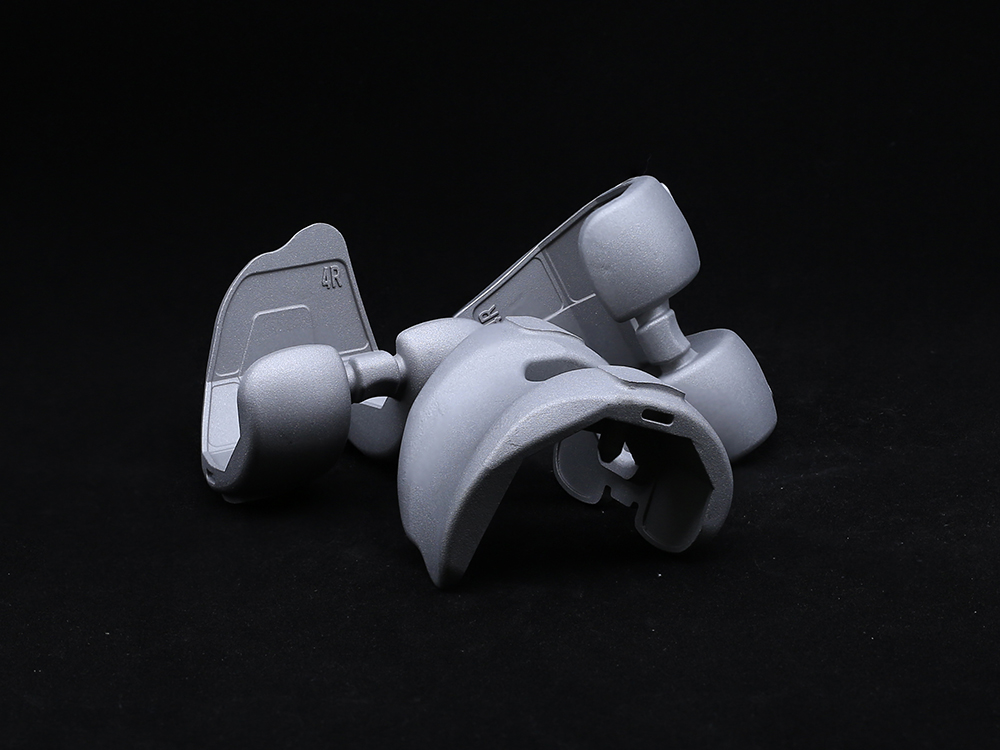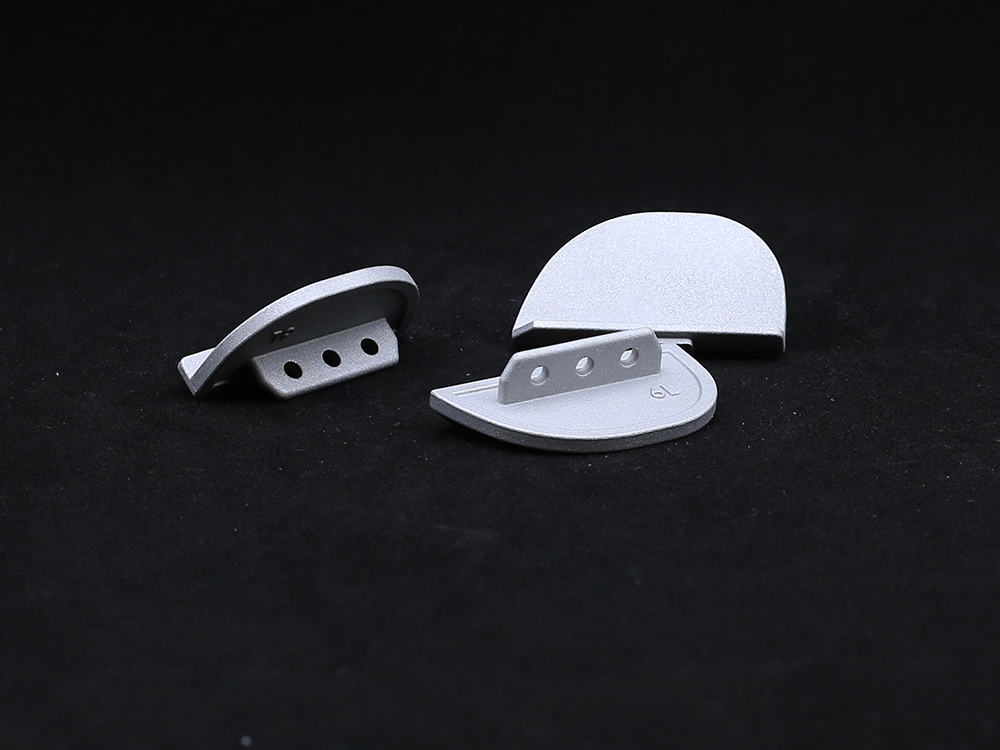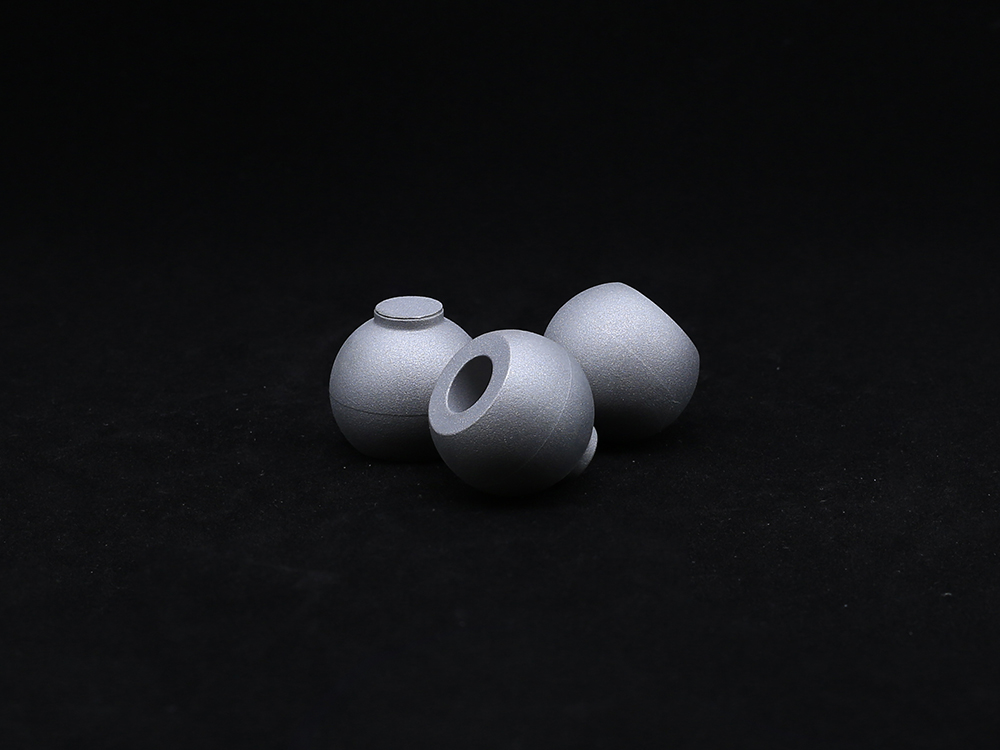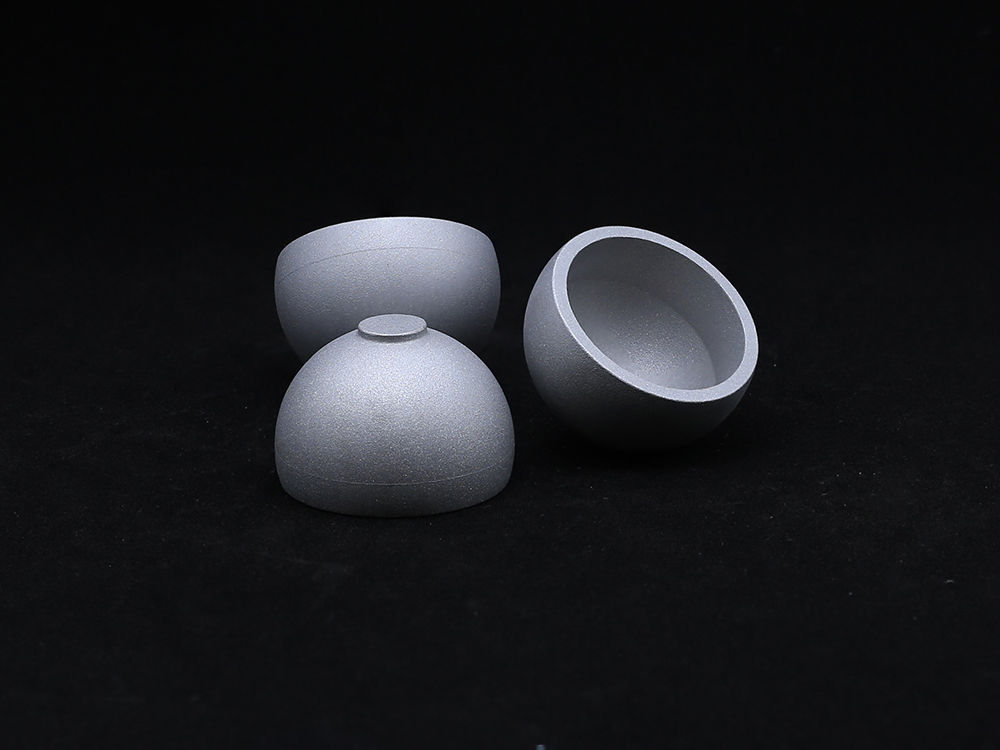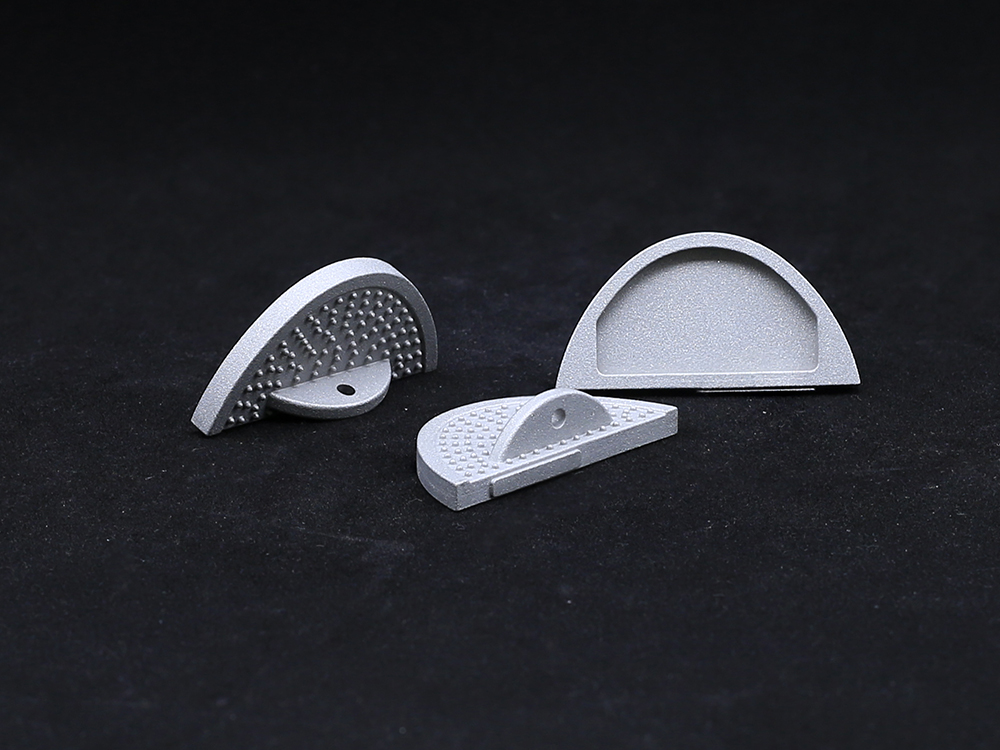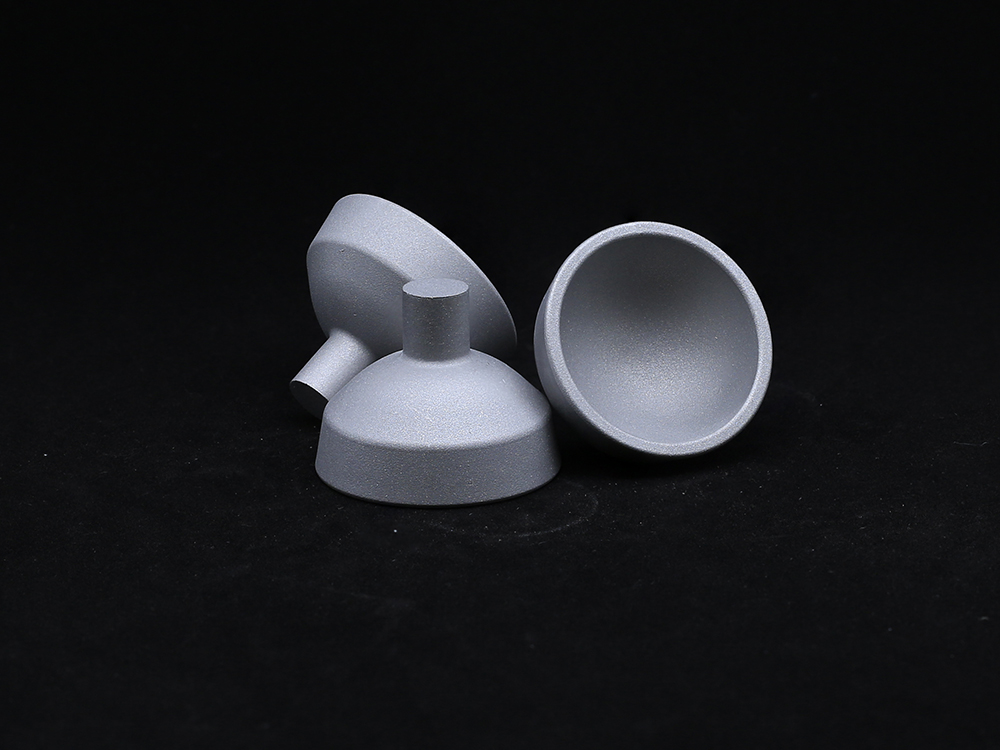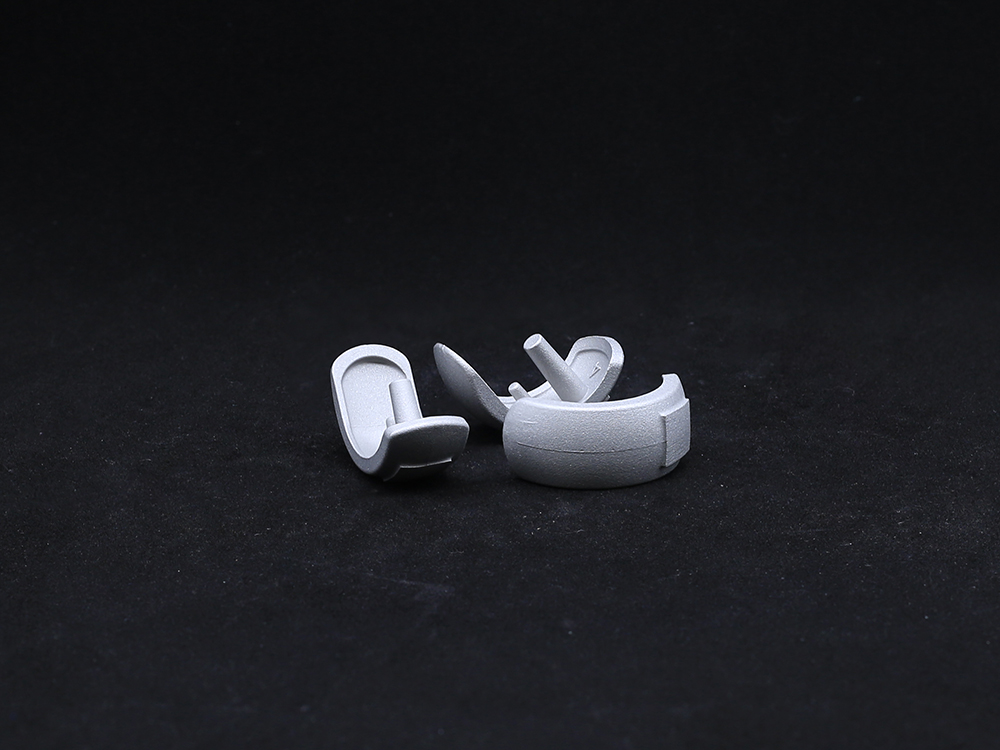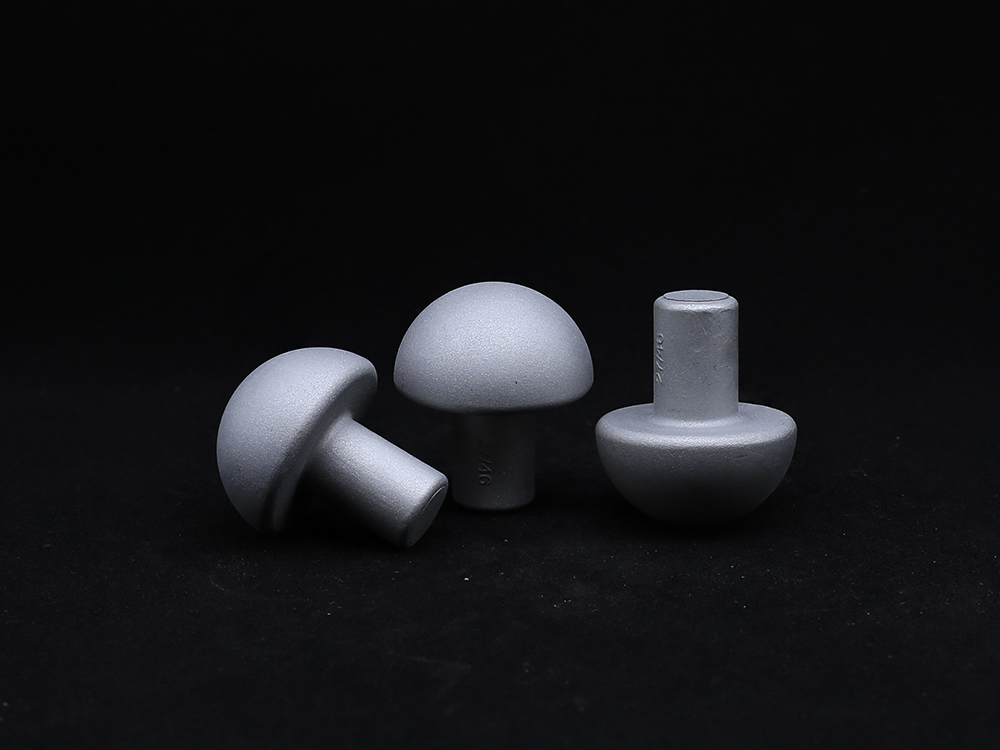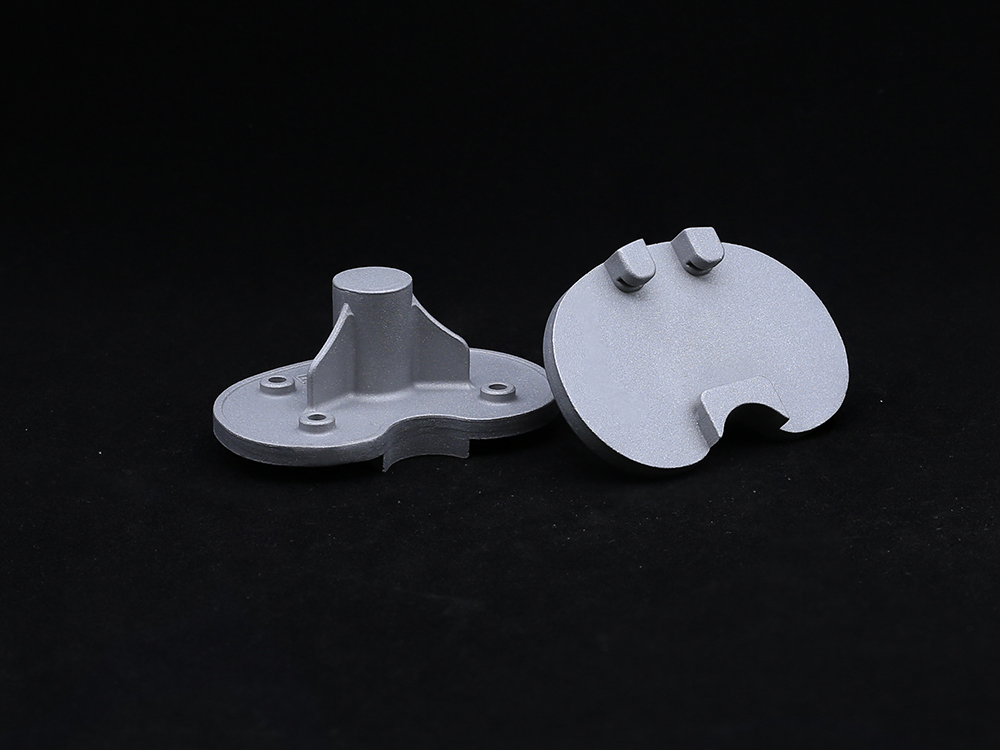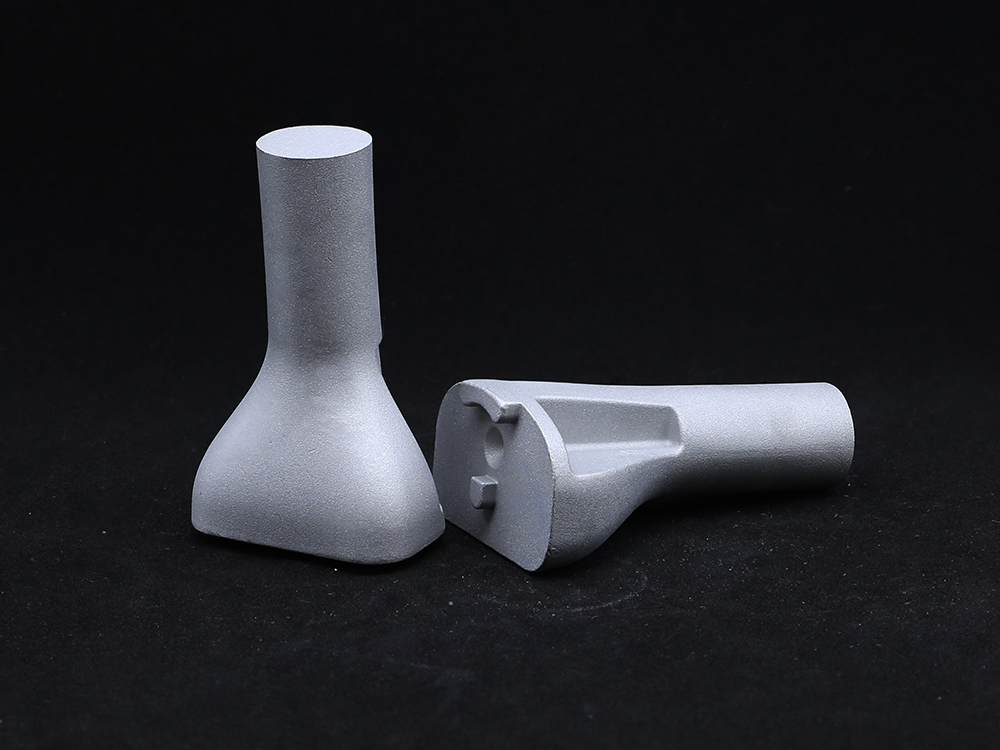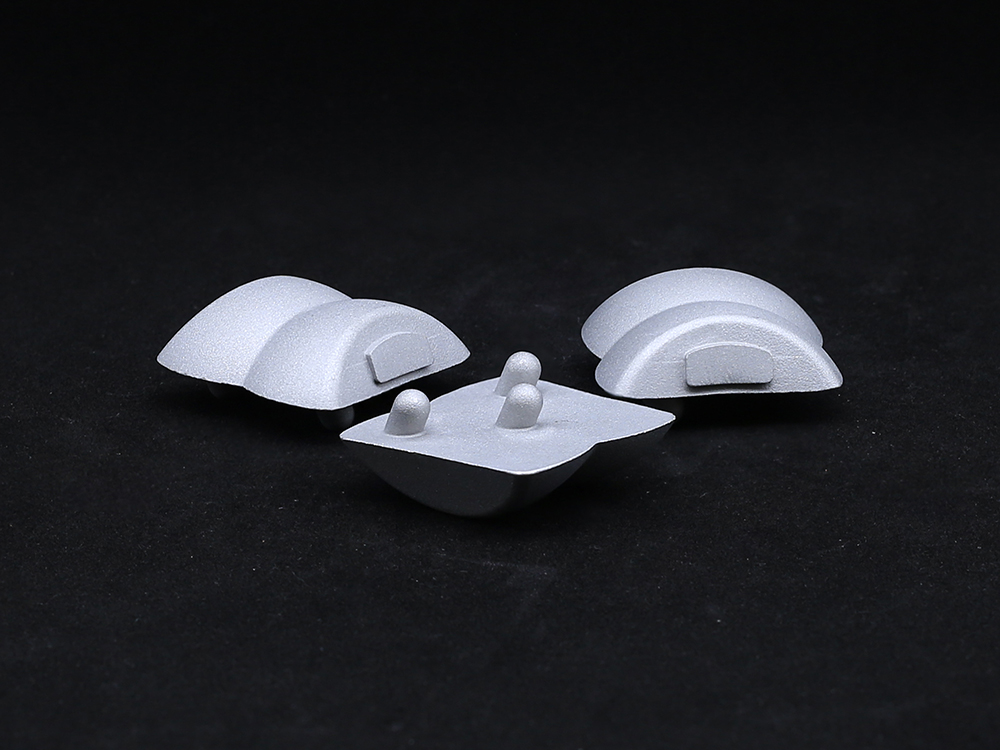- Tel: +8613911709825 /
- Email: ry@rays-casting.com /
Premium Revision Femoral Condyle for Lasting Stability
Advancing Orthopedic Solutions: The Core of Revision Femoral Condyle Technology
The increasing global demographic of aging populations, coupled with enhanced patient activity levels and the natural wear-and-tear of primary total knee arthroplasty (TKA) implants, has significantly propelled the demand for sophisticated revision components. Among these critical solutions, the Revision Femoral Condyle stands out as an indispensable element in addressing complex challenges arising from failed or compromised primary knee replacements. These components are meticulously engineered to confront severe bone loss, restore anatomical alignment, and provide stability in situations where standard primary implants are insufficient. The market for revision knee systems is experiencing robust growth, driven by an imperative for longer implant lifespans and continuous advancements in biomaterials science and precision manufacturing techniques. As orthopedic surgeons face increasingly complex clinical scenarios involving issues such as aseptic loosening, periprosthetic fractures, chronic instability, or infection sequelae, the strategic deployment of advanced revision components becomes paramount. The design and material integrity of a Revision Femoral Condyle directly impact patient outcomes, influencing range of motion, stability, and the ultimate durability of the revision procedure, thereby reinforcing its pivotal role in contemporary orthopedic surgery and contributing significantly to the quality of life for countless patients globally. This specialized field demands not only cutting-edge technology but also a profound understanding of biomechanics and patient-specific needs.
Precision Engineering: The Manufacturing Process of Revision Femoral Condyle
The production of a Revision Femoral Condyle involves a multi-faceted, highly controlled manufacturing process that underscores precision, material integrity, and adherence to stringent medical device standards. The journey begins with the meticulous selection of biocompatible materials, predominantly high-strength Cobalt-Chromium (Co-Cr) alloys, Titanium (Ti) alloys, and specialized ceramics or ultra-high molecular weight polyethylene (UHMWPE) for articulating surfaces. These materials are chosen for their exceptional mechanical properties, corrosion resistance, and proven long-term biocompatibility within the human body. The initial phase typically involves either investment casting or forging, methods selected based on the desired microstructure and mechanical strength. Investment casting allows for intricate geometries and minimizes material waste, while forging enhances grain structure, significantly improving the fatigue strength and overall durability of the component. Following this, advanced Computer Numerical Control (CNC) machining plays a crucial role, transforming the raw forms into the precise anatomical shapes required for the femoral condyle, with tolerances measured in micrometers. This stage is critical for ensuring optimal fit with other implant components and the patient's remaining bone structure. Subsequent processes include meticulous surface finishing, such as polishing to reduce friction and wear against articulating surfaces, and sometimes grit-blasting or porous coating application to promote osseointegration – the direct structural and functional connection between living bone and the surface of a load-bearing implant. Throughout this entire manufacturing lifecycle, rigorous quality control and inspection standards are strictly enforced, encompassing dimensional accuracy, material composition verification, surface integrity, and mechanical performance testing (e.g., fatigue testing, tensile strength). Adherence to international standards like ISO 13485 for Medical Devices Quality Management Systems, ISO 5832 for implantable materials, and ASTM F1537 for Co-Cr-Mo alloys is non-negotiable, ensuring every Revision Femoral Condyle meets the highest benchmarks for safety, efficacy, and longevity. The anticipated service life for these components, when properly implanted, is typically designed to exceed 15-20 years, a testament to the advanced manufacturing techniques and superior material science employed. While primarily engineered for orthopedic applications, the precision manufacturing techniques (casting, forging, advanced CNC) and stringent quality control protocols employed in producing these components are indicative of capabilities applicable to other high-precision industries demanding exceptional material performance, such as specialized components for petrochemical, aerospace, or advanced metallurgical sectors, highlighting the versatile expertise in our manufacturing core.
Key Technical Parameters and Performance Metrics
Understanding the critical technical parameters of a Revision Femoral Condyle is essential for orthopedic surgeons and procurement specialists to make informed decisions that directly impact patient outcomes and long-term implant success. These parameters define the mechanical integrity, biocompatibility, and functional performance of the implant. Material composition is paramount, typically featuring medical-grade Cobalt-Chromium-Molybdenum (CoCrMo) alloys (e.g., ASTM F75 or ISO 5832-4), known for their excellent wear resistance and strength, or sometimes Titanium alloys for specific patient needs due to their lower modulus of elasticity closer to bone and superior biocompatibility. Hardness, often measured in Rockwell or Vickers, reflects the material's resistance to permanent deformation and wear, directly correlating to the longevity of the articulating surfaces. Tensile strength and yield strength quantify the material's ability to withstand pulling forces before fracturing or deforming permanently, respectively, which are critical for enduring the complex load-bearing stresses within the knee joint during daily activities. Fatigue strength, perhaps one of the most crucial parameters, indicates the material's capacity to withstand repeated cyclic loading without failure, directly reflecting the expected in-vivo lifespan of the implant. Surface roughness, measured in Ra (arithmetic average roughness), is meticulously controlled to minimize friction and wear against the UHMWPE bearing surfaces, thereby reducing particulate debris and potential osteolysis. Modularity options are vital for revision implants, allowing surgeons to customize the construct to individual patient anatomy and bone defects, often expressed by available sizes, offsets, and augments. Compatibility with existing knee revision systems from various manufacturers ensures versatility and broader applicability. For instance, a typical CoCrMo Revision Femoral Condyle might exhibit a Vickers Hardness of 350-450 HV, a minimum ultimate tensile strength of 655 MPa, and a yield strength of 450 MPa. The surface roughness of articulating surfaces is usually maintained below 0.05 µm Ra. These specifications are meticulously validated through comprehensive mechanical testing, including wear simulation and finite element analysis, to predict performance under physiological loading conditions. The precise control over these parameters ensures that each Revision Femoral Condyle provides exceptional mechanical stability, minimizes wear, and offers a durable solution for complex revision arthroplasty, contributing significantly to reduced re-revision rates and improved patient mobility.
Typical Technical Specifications for Revision Femoral Condyle
| Parameter | Typical Value Range | Relevant Standard / Significance |
|---|---|---|
| Material Composition | CoCrMo Alloy (ASTM F75 / ISO 5832-4) | Biocompatibility, Wear Resistance, Corrosion Resistance |
| Vickers Hardness (HV) | 350 - 450 HV | Resistance to Plastic Deformation and Wear |
| Ultimate Tensile Strength (UTS) | ≥ 655 MPa | Maximum Stress Before Fracture |
| Yield Strength (YS) | ≥ 450 MPa | Stress at Which Permanent Deformation Begins |
| Fatigue Strength (10^7 cycles) | Approx. 200-300 MPa | Resistance to Cyclic Loading Without Failure; Predicts Lifespan |
| Surface Roughness (Ra) | ≤ 0.05 µm (Articulating Surfaces) | Minimizes Friction, Wear, and Debris Generation |
| Modularity/Size Range | Extensive (e.g., 5-10 sizes, various augments) | Enables Precise Anatomical Fit and Bone Preservation |
Application Scenarios and Strategic Advantages of Revision Femoral Condyle
The specialized design and robust mechanical properties of a Revision Femoral Condyle make it an invaluable component across a spectrum of challenging clinical scenarios in orthopedic surgery, particularly within complex total knee arthroplasty revisions. These components are indispensable when surgeons encounter significant bone loss in the distal femur, which can result from aseptic loosening, osteolysis due to wear debris from a previous implant, or periprosthetic fractures. They also provide crucial solutions for cases involving severe varus or valgus deformities, patellofemoral instability, or ligamentous incompetence that cannot be effectively managed with primary knee replacement components. Furthermore, the Revision Femoral Condyle is often utilized in the revision of failed unicompartmental or bicompartmental knee replacements, where the extent of bone and soft tissue compromise necessitates a more comprehensive solution. The primary advantages offered by these advanced implants are multifaceted. Firstly, their inherent modularity allows for precise reconstruction of the femoral anatomy and restoration of joint line height, which is critical for balancing soft tissues and achieving optimal knee kinematics. This modularity enables surgeons to address specific bone defects with augments, wedges, and stem extensions, leading to enhanced bone preservation and more stable implant fixation. Secondly, the superior load-bearing capacity and fatigue strength of the materials used in these components ensure long-term durability and reduced risk of premature failure, even under high physiological loads. This translates to improved implant longevity and a reduced need for subsequent revision surgeries, which are often more complex and costly. Thirdly, the enhanced design features, including improved articular surfaces and constraint options, contribute to a significantly improved range of motion and greater joint stability, mitigating the risk of dislocation and enhancing patient mobility and comfort. Finally, the ability of these components to effectively manage complex bone deficiencies and reconstruct compromised joint lines contributes to superior patient outcomes, marked by pain reduction, functional improvement, and a higher quality of life. The problem-solving nature of the Revision Femoral Condyle in these intricate cases solidifies its position as a cornerstone in modern revision knee arthroplasty, pushing the boundaries of what is achievable in orthopedic reconstruction.
Navigating the Landscape: Manufacturer Comparison and Customization Solutions
Selecting the optimal manufacturer for Revision Femoral Condyle components requires a comprehensive evaluation of several critical factors that extend beyond mere product specifications to encompass broader aspects of partnership and support. Reputational standing within the orthopedic community, robust quality control systems, and a proven track record of innovation are foundational criteria. Leading manufacturers distinguish themselves through continuous investment in Research & Development, driving advancements in biomaterials, implant design, and surgical instrumentation. Expertise in material science, particularly concerning the metallurgy of Cobalt-Chromium and Titanium alloys, is non-negotiable, ensuring implants possess optimal strength, wear resistance, and biocompatibility. Furthermore, the availability of extensive customization options is increasingly vital, recognizing the inherent variability in patient anatomy and the complexity of revision cases. This includes offering a broad spectrum of sizes, augments, and modular components to precisely address unique bone defects and patient-specific requirements, often leveraging advanced imaging and 3D modeling technologies for patient-specific implant creation. Post-sales support, encompassing technical assistance, clinical education, and responsive customer service, plays a significant role in ensuring seamless integration into surgical practice and effective long-term patient management. While some manufacturers may specialize in a broad product portfolio catering to diverse orthopedic needs, others might focus on niche areas, developing highly specialized solutions for the most challenging revision surgeries. For example, a manufacturer known for its advanced material science might offer Revision Femoral Condyle components with superior fatigue life, while another might excel in patient-specific instrumentation or rapid prototyping for urgent custom cases. Our commitment to both standardized excellence and bespoke solutions ensures that whether a standard size or a uniquely customized implant is required, the underlying quality, precision, and performance are consistently upheld. This flexibility in approach enables orthopedic centers to acquire components that perfectly match specific clinical needs, thereby optimizing surgical outcomes and patient recovery pathways.
Hypothetical Manufacturer Comparison Matrix for Revision Femoral Condyle
| Feature/Criterion | Manufacturer Alpha (e.g., Focus on Innovation) | Manufacturer Beta (e.g., Cost-Efficiency) | Manufacturer Gamma (e.g., Broad Portfolio) |
|---|---|---|---|
| Material Science Expertise | Advanced proprietary alloys, superior wear properties | Standard industry-grade alloys, reliable performance | Wide range of materials, including Ti and CoCrMo |
| Customization Capabilities | Extensive patient-specific designs, 3D printing for rapid prototyping | Limited standard modular options, less custom work | Good range of modular components, some custom capacity |
| Product Range & Modularity | Highly specialized revision systems, advanced features | Basic to intermediate modularity for common cases | Comprehensive range covering primary and revision TKA needs |
| Quality Control Standards | Exceeds ISO/FDA, additional proprietary testing protocols | Meets ISO/FDA baseline requirements | Strong adherence to ISO/FDA with continuous improvement |
| Post-Sales Support | Dedicated clinical specialists, rapid technical support | Standard customer service, online resources | Well-structured support network, educational programs |
Successful Implementations: Application Cases and Client Feedback
The tangible benefits of a meticulously engineered Revision Femoral Condyle are best evidenced through real-world application cases and direct client feedback from leading orthopedic centers. One notable example involved a 72-year-old male patient presenting with severe aseptic loosening of his primary total knee replacement, complicated by significant distal femoral bone loss (Anderson Orthopaedic Research Institute, AORI, Type 2B defect). The surgical team faced the challenge of reconstructing a stable knee joint while preserving as much viable bone stock as possible. Utilizing a modular Revision Femoral Condyle system with specialized augments, the surgeons were able to precisely fill the bone defect and restore the mechanical axis and joint line. The high-strength Cobalt-Chromium alloy of the condyle provided exceptional stability and allowed for immediate weight-bearing post-operatively. Post-surgical follow-up at six months showed excellent functional recovery, with the patient reporting significantly reduced pain and an improved range of motion from 0-115 degrees, enabling him to return to daily activities without assistance. This case exemplifies how advanced revision components facilitate successful outcomes in highly complex scenarios. A prominent orthopedic surgeon, Dr. Eleanor Vance, from a reputable university hospital, commented on the consistent performance: "Our experience with this Revision Femoral Condyle system has been overwhelmingly positive. The precision of the components and the intuitive instrumentation have streamlined our revision procedures, even in cases with extensive bone loss. We've observed superior early stability, which is crucial for patient confidence and rehabilitation. The robust design and material quality give us assurance in the long-term prognosis for our patients." Another head of procurement at a large hospital network praised the operational efficiency: "Beyond the clinical benefits, the reliability and standardized quality control of these Revision Femoral Condyle components have significantly improved our inventory management and reduced lead times for critical cases. The consistent quality means fewer unexpected complications and more predictable surgical scheduling, contributing to overall departmental efficiency and patient throughput." These insights underscore not only the clinical superiority but also the operational advantages that high-quality Revision Femoral Condyle components bring to demanding healthcare environments. The consistent delivery of reliable, high-performance implants is fundamental to improving both patient care and hospital operational metrics, demonstrating a clear return on investment.
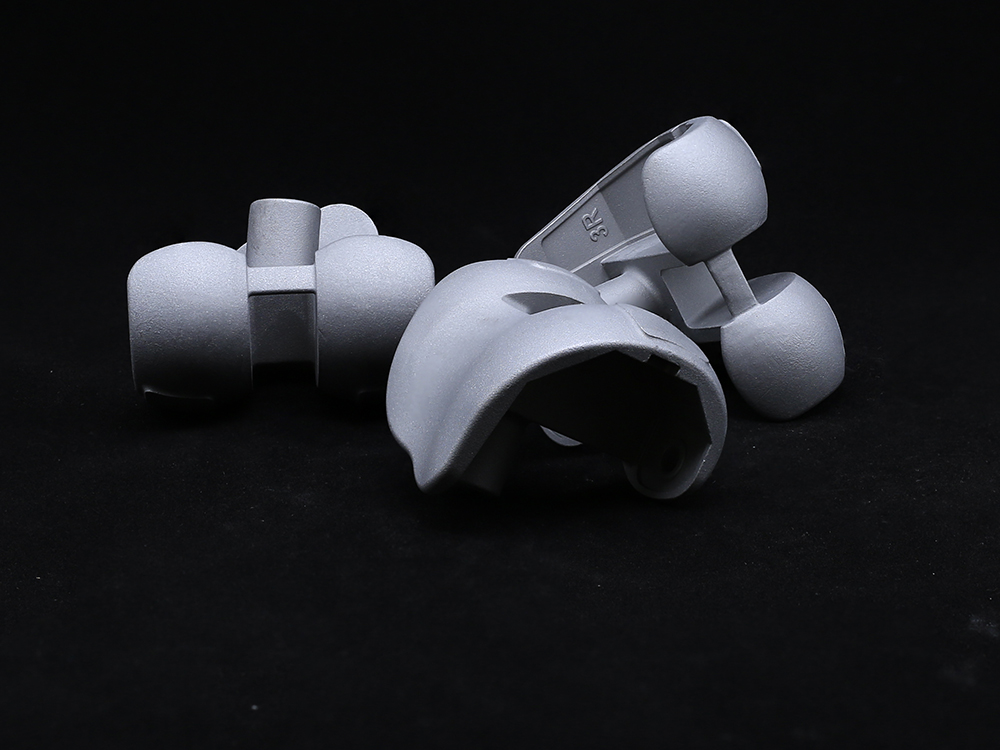
Unwavering Commitment: Quality Assurance, Certifications, and Trustworthiness
The trustworthiness of any medical device, especially a critical component like a Revision Femoral Condyle, is built upon a foundation of stringent quality assurance, comprehensive certifications, and an unyielding commitment to patient safety and product reliability. Our manufacturing processes are rigorously controlled and monitored from the initial raw material sourcing to the final packaging and sterilization. Raw materials undergo extensive chemical and mechanical testing to verify their compliance with international standards such as ASTM F75 for CoCrMo alloys, ensuring only the purest, highest-grade materials are used. In-process quality checks are integrated at every stage of manufacturing, including dimensional inspections after CNC machining, surface finish verification, and non-destructive testing (NDT) to detect any internal flaws. The final products are subjected to a battery of mechanical tests, including fatigue, tensile, and compressive strength assessments, to simulate real-world physiological loading and ensure long-term performance. We proudly hold certifications such as ISO 13485:2016, which is the internationally recognized standard for medical device quality management systems, confirming our dedication to regulatory compliance and the consistent production of safe and effective medical devices. Furthermore, our products are designed to meet or exceed the requirements for key regulatory clearances like the CE Mark for sales in Europe and, where applicable, FDA clearance for the United States market, validating their clinical efficacy and safety. With over two decades of specialized experience in precision casting and machining for demanding industries, our company has cultivated deep expertise and established robust partnerships with leading material suppliers and testing laboratories, ensuring a continuous feedback loop for product improvement and innovation. This long-standing industry presence and consistent delivery of high-quality components have fostered strong relationships with our clients globally. Our commitment extends to providing comprehensive service support and maintaining the highest ethical standards in all our operations.
Frequently Asked Questions (FAQs)
-
Q: What materials are primarily used for the Revision Femoral Condyle?
A: Our Revision Femoral Condyle components are primarily manufactured from high-performance medical-grade Cobalt-Chromium-Molybdenum (CoCrMo) alloys, such as ASTM F75 or ISO 5832-4, renowned for their biocompatibility, exceptional wear resistance, and high mechanical strength, crucial for long-term orthopedic implant success.
-
Q: How does the modularity of your Revision Femoral Condyle system benefit surgeons?
A: The modularity offers surgeons unparalleled flexibility and precision in addressing complex bone defects and anatomical variations often encountered in revision surgeries. It allows for the selection of specific augments and sizes, enabling customized reconstruction of the joint line, restoration of the mechanical axis, and preservation of vital bone stock, ultimately leading to a more stable and functional outcome for the patient.
-
Q: What is the typical delivery timeline for standard and customized orders?
A: For standard Revision Femoral Condyle components, our typical delivery timeline is 2-4 weeks, subject to inventory and order volume. Customized orders, which involve specific design and manufacturing processes, usually require a lead time of 6-10 weeks from final design approval, ensuring meticulous precision and quality. We strive to expedite critical orders whenever possible through efficient production planning.
Assured Partnership: Warranty and Comprehensive Customer Support
Our unwavering commitment to the long-term success of our clients and the well-being of their patients is underscored by our robust warranty policy and comprehensive customer support infrastructure for every Revision Femoral Condyle supplied. We provide a standard warranty that covers manufacturing defects and material integrity for a specified period, ensuring peace of mind for both surgeons and healthcare institutions. The precise terms and conditions of this warranty are clearly outlined in our product documentation and are designed to provide clarity and fairness. Beyond the initial sale, our dedication to client satisfaction continues through a multi-tiered customer support system. This includes dedicated technical assistance lines, staffed by experienced engineers and product specialists who can provide detailed guidance on product specifications, surgical techniques, and troubleshooting. For more in-depth clinical queries or complex case discussions, our team of clinical support specialists, many of whom have backgrounds in orthopedic surgery or related medical fields, are available for consultation. This ensures that surgeons receive not only the highest quality Revision Femoral Condyle components but also the expert knowledge required to optimize their use in challenging revision procedures. We also offer comprehensive after-sales service, including educational programs, training workshops, and regular updates on product advancements and best practices in revision arthroplasty. Our commitment to fostering enduring partnerships means we are continuously responsive to feedback, adapting our services and product offerings to meet the evolving needs of the orthopedic community. This holistic approach to support guarantees that our clients are never alone in their pursuit of excellent patient outcomes, reinforcing our position as a trusted partner in advanced orthopedic solutions and highlighting our dedication to building confidence and providing long-term value in every interaction.
Authoritative References and Further Reading
- Maloney, W. J., & Engh, C. A. (1990). Revision total hip arthroplasty with an uncemented femoral component: a concise follow-up. Journal of Bone and Joint Surgery - American Volume, 72(10), 1546-1550. (Though focused on hip, principles of revision and material longevity are relevant).
- Kurtz, S. M., et al. (2007). Aseptic loosening and osteolysis in total knee arthroplasty: prevalence and risk factors. Journal of Bone and Joint Surgery - American Volume, 89(4), 795-802.
- Ranawat, C. S., & Rodriguez, J. A. (1997). Revision total knee arthroplasty for aseptic loosening. Orthopedic Clinics of North America, 28(2), 337-347.
- Sharkey, P. F., et al. (2002). Why are total knee arthroplasties failing today? Clinical Orthopaedics and Related Research, (404), 7-13.
- Goodman, S. B. (2012). Biological response to particles: an orthopedic perspective. Acta Biomaterialia, 8(11), 3871-3881. (Relevant to wear and material selection for Revision Femoral Condyle).
Get a Custom Solution!
Contact Us To Provide You With More Professional Services

